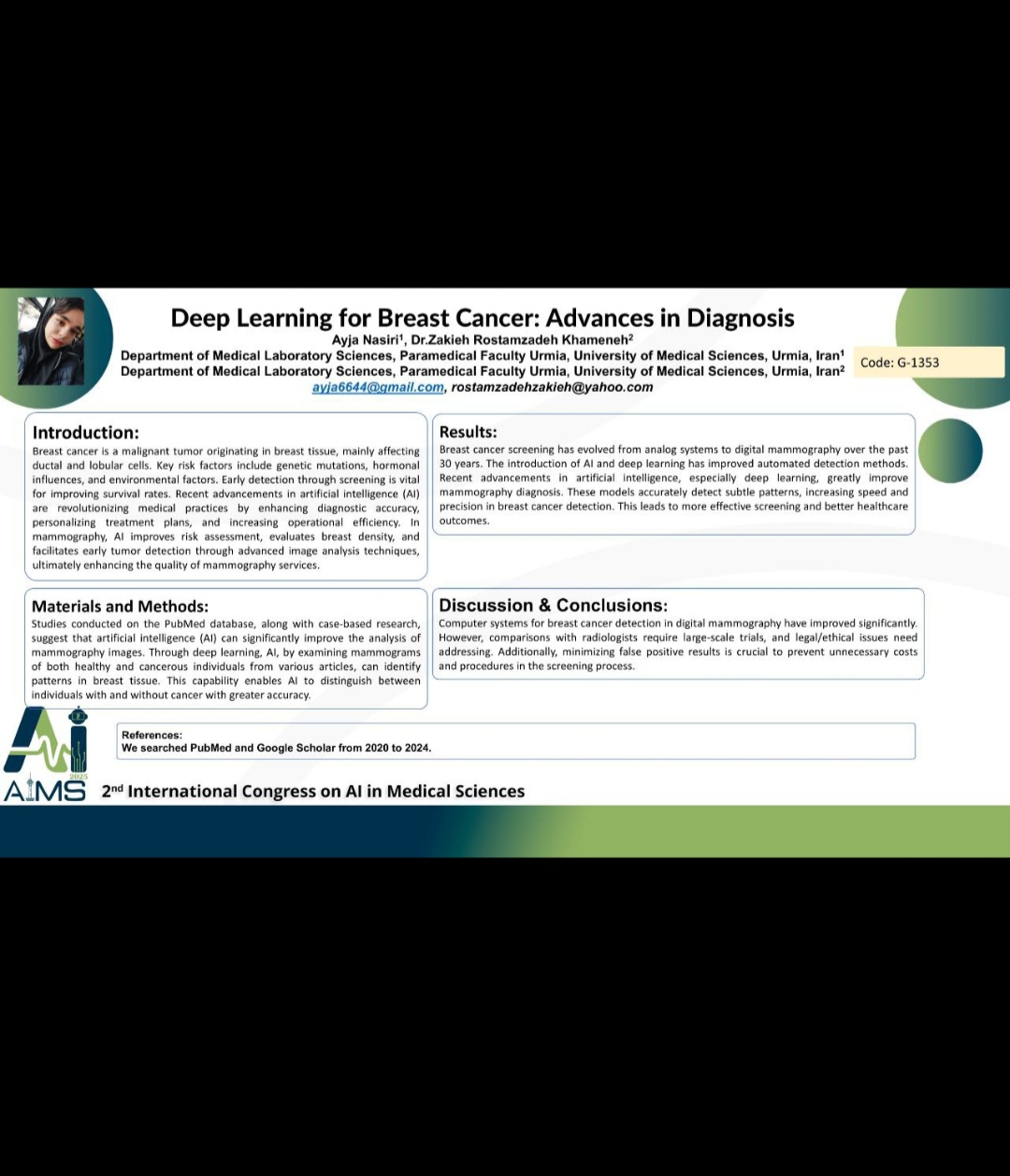Deep Learning for Breast Cancer: Advances in Diagnosis
Code: G-1353
Authors: Ayja Nasiri * ℗, Zakiyeh Rostamzadeh
Schedule: Not Scheduled!
Tag: Clinical Decision Support System
Download: Download Poster
Abstract:
Abstract
Background and Aims: Breast cancer is a malignant tumor originating in breast tissue, mainly affecting ductal and lobular cells. Key risk factors include genetic mutations, hormonal influences, and environmental factors. Early detection through screening is vital for improving survival rates. Recent advancements in artificial intelligence (AI) are revolutionizing medical practices by enhancing diagnostic accuracy, personalizing treatment plans, and increasing operational efficiency. In mammography, AI improves risk assessment, evaluates breast density, and facilitates early tumor detection through advanced image analysis techniques, ultimately enhancing the quality of mammography services. Methods: Studies conducted on the PubMed database, along with case-based research, suggest that artificial intelligence (AI) can significantly improve the analysis of mammography images. Through deep learning, AI, by examining mammograms of both healthy and cancerous individuals from various articles, can identify patterns in breast tissue. This capability enables AI to distinguish between individuals with and without cancer with greater accuracy. Results: Breast cancer screening has evolved from analog systems to digital mammography over the past 30 years. The introduction of AI and deep learning has improved automated detection methods. Recent advancements in artificial intelligence, especially deep learning, greatly improve mammography diagnosis. These models accurately detect subtle patterns, increasing speed and precision in breast cancer detection. This leads to more effective screening and better healthcare outcomes. Conclusions: Computer systems for breast cancer detection in digital mammography have improved significantly. However, comparisons with radiologists require large-scale trials, and legal/ethical issues need addressing. Additionally, minimizing false positive results is crucial to prevent unnecessary costs and procedures in the screening process.
Keywords
Deep Learning, Diagnosis, Mammography
